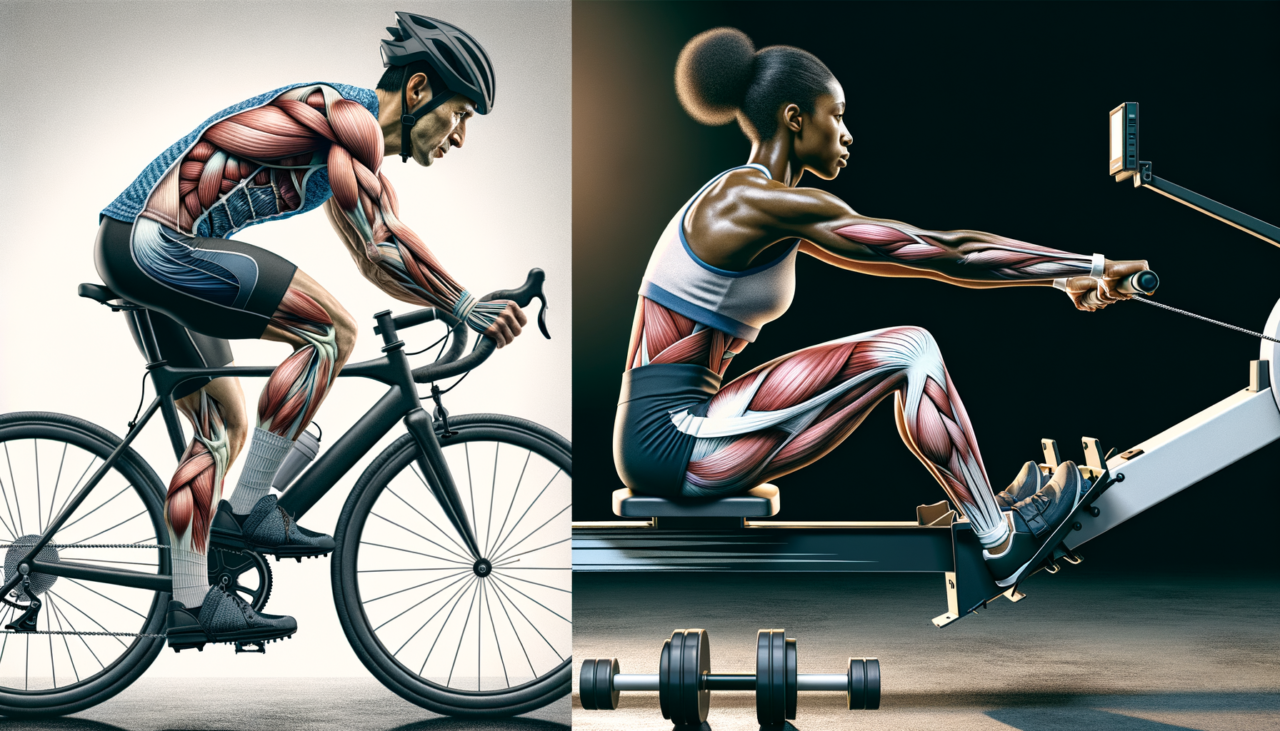Cycling vs. Rowing: Lower Body Load vs. Upper Body Load
In the ever-evolving world of fitness, the debate between cycling and rowing is akin to the classic Nigerian proverb: “When two elephants fight, it is the grass that suffers.” Only here, the grass represents our muscles, eagerly awaiting the next workout challenge. Both cycling and rowing have their unique benefits, serving different parts of the body like a well-prepared Nigerian jollof rice, where every ingredient plays its role to perfection. Let’s take a deep plunge into the waters of comparison to see which of these exercises best suits your fitness palate.
The Comparative Table: Cycling vs. Rowing
| Feature | Cycling | Rowing |
|---|---|---|
| Primary Muscle Group | Lower body (quads, hamstrings, calves, glutes) | Upper body (back, shoulders, arms) and lower body |
| Cardiovascular Benefit | Excellent for heart health, improves circulation. | High-intensity cardiovascular workout. |
| Calorie Burn | 400-600 calories per hour (moderate intensity) | 600-800 calories per hour (vigorous intensity) |
| Impact on Joints | Low-impact, gentle on joints. | Low-impact, but requires correct form to avoid strain |
| Equipment Cost | Variable, from budget-friendly to high-end models | Similar range, but rowing machines often pricier |
| Space Requirement | Requires less space, especially stationary bikes | Requires more space, especially for home setups |
| Skill Level | Beginner-friendly, easy to learn. | Requires learning proper technique and form. |
| Weather Dependency | Outdoor cycling is weather-dependent; indoor isn’t | Mostly indoor, unaffected by weather conditions. |
Characteristics of Cycling
Cycling, like the rhythmic beats of a talking drum, focuses predominantly on the lower body. The quads, hamstrings, calves, and glutes work in harmony, making it an excellent choice for those looking to strengthen and tone their leg muscles. This exercise is also a heart-friendly option, promoting cardiovascular health and boosting circulation akin to a lively Nigerian marketplace. Moreover, cycling is gentle on the joints, making it suitable for individuals across various age groups and fitness levels.
The freedom of cycling outdoors, with the wind in your hair and the world at your pedals, can be liberating. However, if the weather turns sour, indoor cycling offers a reliable alternative. The cost of entry varies widely, from budget-friendly options to high-end models, allowing enthusiasts to choose according to their financial comfort zone.
Characteristics of Rowing
Rowing, on the other hand, is a full-body workout that engages both the upper and lower body, similar to the synergy required in preparing a delicious pot of egusi soup. It demands coordination and rhythm, targeting the back, shoulders, arms, and legs, offering a comprehensive workout that turns the whole body into a well-oiled machine.
The cardiovascular benefits of rowing are immense, often described as a vigorous workout that can torch between 600 to 800 calories per hour. However, mastering the rowing technique is crucial to avoid unnecessary strain, much like ensuring the right balance of spices in a dish. Rowing machines often require more space, and the initial cost can be higher, but the investment pays off with consistent use.
Conclusion
In the grand scheme of fitness, choosing between cycling and rowing depends on your personal goals, preferences, and physical condition. As the Yoruba proverb goes, “A river that forgets its source will soon dry out.” Similarly, your fitness journey should not forget its roots—your unique needs and aspirations. Whether you gravitate towards the leg-focused, rhythmic cycling or the full-body, intense rowing, both paths lead to improved health and well-being. Ultimately, the best exercise is the one you enjoy and can incorporate consistently into your lifestyle.
For more insightful comparisons and fitness tips, continue exploring our articles on CompareAnything.org, where every choice is a step towards a healthier you.

Comments (0)
There are no comments here yet, you can be the first!